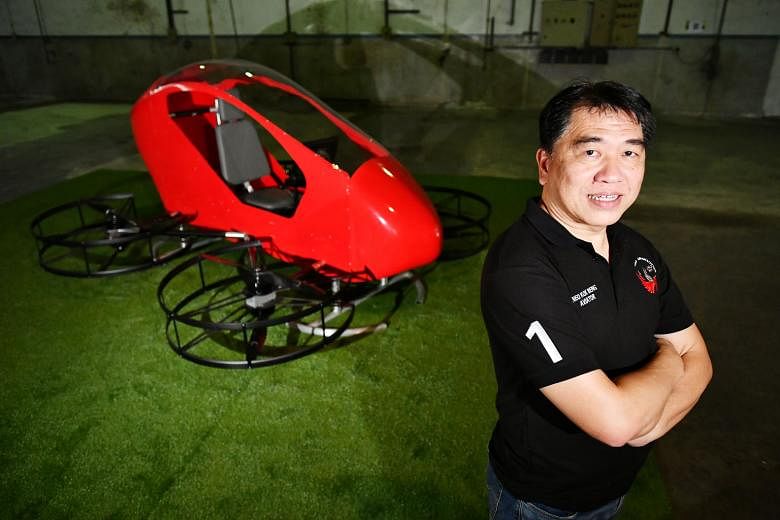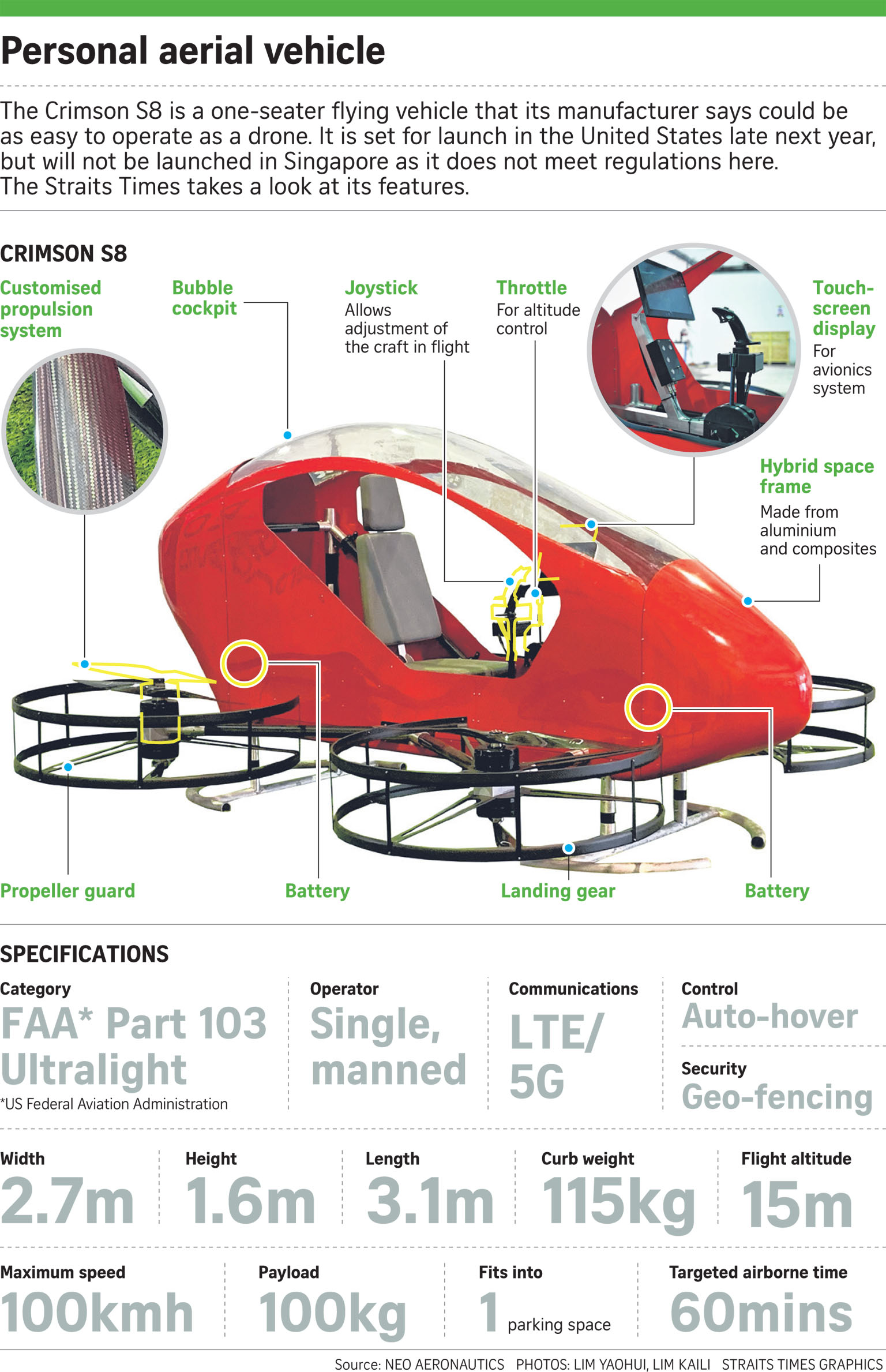A Singapore firm has unveiled a one-seater flying vehicle that it hopes could be used for door-to-door transport in urban areas when it is launched in the United States.
The personal aerial vehicle, named Crimson S8, is set to be launched in California late next year, Neo Aeronautics said yesterday. It will not be launched in Singapore because of the regulations here.
The vehicle is undergoing indoor trials without an operator on board in Loyang. Neo Aeronautics is looking to fine-tune the model and conduct outdoor trials soon. It may approach the Civil Aviation Authority of Singapore (CAAS) to explore the possibility of outdoor trials.
The firm aims to start flight tests in the US by March next year.
Founder and chief executive Neo Kok Beng said the vehicle is designed for low-level urban aerial mobility and facilitates door-to-door urban transport.
It can fit a standard US carpark space measuring around 15 sq m and can fly at a height of 15m with a payload of 100kg. It will have a maximum speed of 100kmh. The current development model can stay airborne for about 20 minutes, but the firm plans to improve the limit to at least 60 minutes. The vehicle has the capability to fly on autopilot, or be manually controlled by the pilot.
Associate Professor (Adjunct) Neo, who teaches innovation and technology commercialisation at the National University of Singapore, said the Crimson S8 is designed to fit into the ultralight category set by the US Federal Aviation Administration. This means any potential operator will not require a pilot licence to fly it.
"The Crimson S8 fulfils our aspiration that everyone can fly as it is as simple as operating a drone," he said. The firm plans to roll out the vehicle in 25 cities in the US by 2025, with 1,000 units in each city.
Prof Neo started the firm last August and built the Crimson S8 with three other engineers. He has invested over $200,000 of his own money into the project and plans to offer the Crimson S8 under a membership scheme. "If we sell unit by unit, not many people can afford it."
Members will need to undergo a two-hour training session before they can fly the vehicle. Prof Neo hopes regulations will evolve over time to allow the Crimson S8 to be launched in Singapore and in other cities, and he will explore opportunities to work with the authorities.
"We are now focused on human flight, but we can adapt the vehicle for logistics flights," he said, adding that it is possible for the vehicle to be a "heavy lifter from sea to shore".
Mr Tan Kah Han, CAAS' senior director of its safety regulation group and director of airworthiness certification and unmanned aircraft systems, said Neo Aeronautics has not approached CAAS to operate in Singapore. "To facilitate trials, CAAS needs to ensure that the risks associated with such trials are adequately mitigated so that public and aviation safety is not compromised," he added. "That is why we require prototypes to undergo stringent safety evaluations and satisfy strict technical requirements before they can be allowed to fly."
The development of flying vehicles has picked up speed worldwide.
German aviation start-up Volocopter is aiming to perform a series of urban flight tests of its air taxis in Singapore later this year. The firm's air taxi resembles a helicopter, but is based on drone technology and can fly two people for about 30km. It is designed specifically for inner-city missions and can carry 160kg.
Meanwhile, aviation giant Boeing said in January that its prototype "flying car" had completed its first successful test flight outside Washington. It was designed for fully autonomous flight from take-off to landing, with a range of up to 80km.
But Singapore University of Technology and Design robotics specialist Foong Shaohui, who provided advice for the Crimson S8 project, said time will be needed for aerial vehicles to become more mainstream.
"The infrastructure that supports and permits these operations is just as important and this infrastructure will need some time to be built up."



